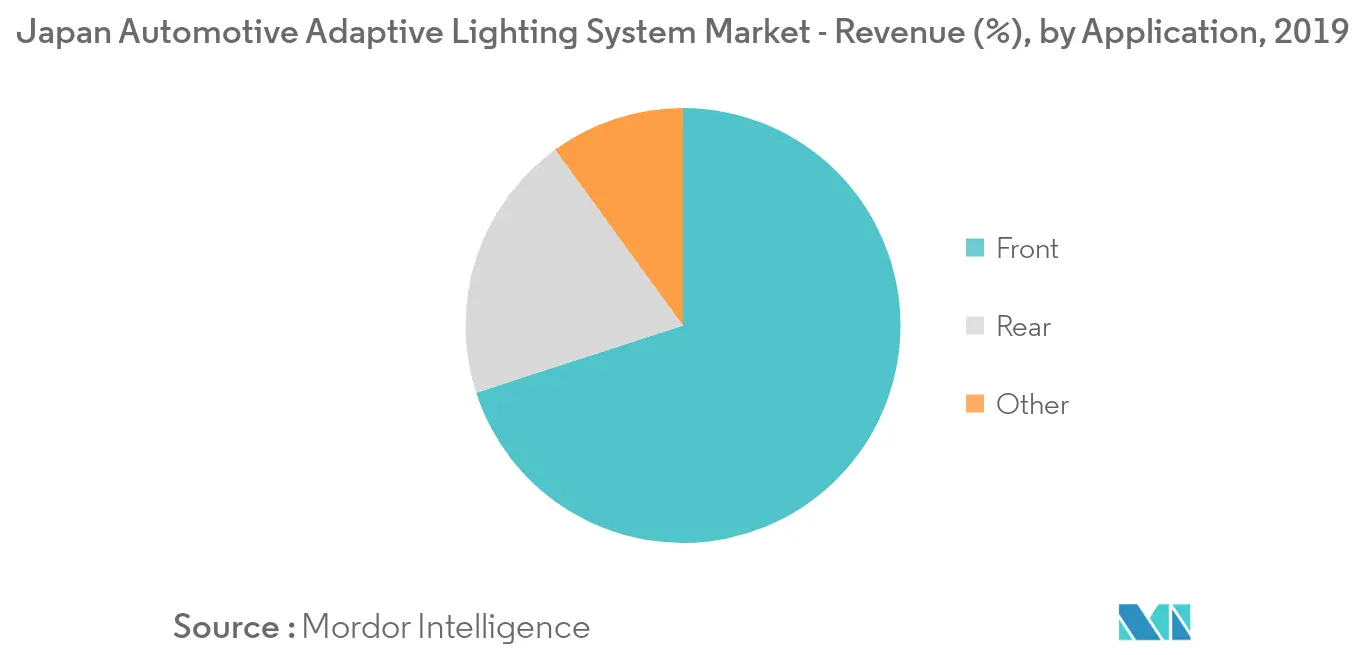Market Trends of Japan Automotive Adaptive Lighting System Industry
This section covers the major market trends shaping the Japan Automotive Adaptive Lighting System Market according to our research experts:
Front headlight will lead the market
Keeping the passengers safe and providing the driver a world-class driving experience has become the main agenda of the middle-high end passenger car manufacturers. Starting from ABS and EBS to the present day auto-cruise control systems, automotive manufacturers have made their search for advanced driver assistance systems a prime target. The adaptive lighting system also called the automotive adaptive front-lighting system (AFS), is one such effort as a part of an active safety system (ASS).
Whereas, leading automotive OEMs in the country are launching vehicles with adaptive headlight feature. Mainly this feature is observed in the high-end SUV and luxury cars. For instance
- In 2019, BMW updated its X1 into a plug-in hybrid X1, with new Adaptive LED headlights, bumper with integrated LED fog lamps, centrally mounted 6.5-inch screen, whereas, the navigation system has the option of 8.8-inch or 10.25-inch Touch Control Display.
- In 2019, Koito Manufacturing Co. Ltd has announced that it will acquire the remaining 29.9% share of India Japan Lighting Pvt. Ltd (IJLPL), which is the company's joint venture with TVS Group.

Incorporation of Sensors/ Camera is likely drive the Market
Several car manufacturers and light manufacturers are having their own mechanism of adaptive lighting, but the most important role in this system is of the cameras and sensors as it provides the information to the system, and then accordingly light changes its intensity and direction. For instance,
Audi adaptive xenon headlights have the gas discharge lamps. It provides much brighter light as halogen incandescent lamps also their energy consumption is 20 percent less. Audi offers these headlights in every model either as standard or as an option. This module is electromechanically rotated for the adaptive light.
Similarly, in Hella adaptive headlight systems, the company's VarioX® module is combined with a swiveling module. In the combination in between the light source and the lens, there is a cylinder that can be rotated in its longitudinal axis. The outer surface of the cylinder generates different light distributions on the road and the stepper motor turns the cylinder to the required position within milliseconds.
Whereas, BMW Adaptive Headlights comes with optional glare-free High Beam Assist which controls the main beam of the headlights for proper illumination of the road.In this system an image sensor which is inside the front mirror looks after the lighting conditions and the traffic ahead up to a distance of 400 meters.


